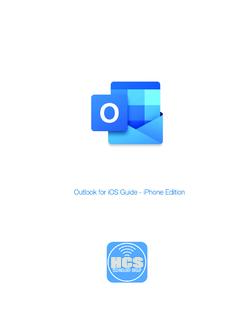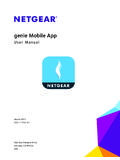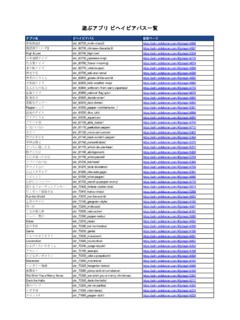Transcription of Version 10.12 A Guide to Your System Preferences
1 MacOS SierraVersion Guide to Your System PreferencesHCS Technology GroupmacOS Sierra: A Guide to Your System PreferencesProduced by HCS Training Centers, Ltd. No part of this publication may be reproduced, stored in a retrieval System or transmitted in any form or by any means, electronic, mechanical, photocopying, recording or otherwise without the prior written permission of HCS Training Centers, Ltd. HCS Training Centers, Ltd. will not be held responsible for any loss of 2016 HCS Training Centers, Ltd. All rights reservedContentsSystem Preferences .
2 4 General ..5 Desktop and Screen Saver ..6 Dock ..7 Mission Control ..8 Language & Region ..9 Security and Privacy - General and Privacy - Filevault ..11 Security and Privacy - Firewall ..11 Security and Privacy - Privacy ..12 Spotlight ..13 Notifications ..14 DIsplays ..15 Energy Saver ..16 Keyboard ..17 Mouse ..18 Trackpad ..19 Printers & Scanners ..20 Sound ..21iCloud ..22 Internet Store ..24 Network ..25 Bluetooth ..26 Extensions ..27 Sharing ..28 Users & Groups ..29 Parental Controls ..30 App Store ..32 Dictation & Speech ..33 Date & Time ..34 Startup Disk.
3 35 Time Machine ..36 Accessibility ..37 CDs & DVDs (Optional) ..384 System PreferencesWhen System Preferences is first launched, you ll see rows of icons, each corresponding to a specific group of related options. Click on any icon to access the relevant pane. Alternatively, you can access a pane if you click-hold, Ctrl-click or right-click the System Preferences Dock icon s contextual in System Preferences If you re not sure exactly what you re looking for, use the built-in search in the top right corner. Click in the search field (or press Cmd+F) and start typing.
4 As you type, the number of subjects in the results list will be filtered to match your search term, and spotlights will appear, highlighting potentially relevant panes that might offer what you require System Preferences in Alphabetical order You can reorder the panes by using the View menu, which provides options for organising panes by category or listing everything alphabetically. Hiding a System preference Pane When you select View > Customize, checkboxes appear next to each pane. Deselect any pane s checkbox and click Done and the pane will be hidden, but it will remain accessible from the View menu and when performing Do I Remove a Third-Party preference pane?
5 A third-party System Preferences pane can be removed either by the pane s own uninstaller (if it has one) or by Ctrl/right-clicking it and selecting Remove < preference Pane Name> 5macOS Sierra System PreferencesGeneralThe first System preference Pane, General, pertains to appearance, scroll bars, document behavior and the number of recent items shown in the Apple Determines the button, menu and window theme for macOS, enabling you to switch between Blue and Graphite. This affects default buttons in dialogs, selected menu items, and also the close/minimize/full-screen buttons at the top-left of most app windows.
6 With the Graphite theme, all of these are grey. Use dark menu bar and Dock This turns the menu bar and Dock black, rather than white, to better fit in with some professional applications that have dark interfaces. This option also adjusts Spotlight s appearance. Automatically hide and show the menu bar When active, this option hides the menu bar unless the cursor is at the top of the color This enables you to change the color of highlighted content such as selected text in documents. Apple provides a list of colors you can choose from, but you can define your own by selecting Other and using the standard macOS color icon size This gives you alternate options for the size of icons in Finder s sidebar.
7 Medium is the default, Large is good if you find it hard to click the existing icons, and Small is the best choice if you ve a small display. Note that the setting you define here also affects the sidebar in Scroll Bars You can adjust how scroll bars in macOS behave. By default, they are not visible, but show automatically when you move your mouse or trackpad over them. You can adjust this so that they only show when scrolling regardless of the input device or always show when content is too big for the viewport. The Click in the scroll bar to This setting changes how macOS jumps to content when you click inside a scroll bar.
8 With Jump to the next page selected, content jumps in screen-heights or pages, in the direction of your click; with Jump to the spot that s clicked, it instead jumps to the point in the document relative to the location clicked on the scroll bar. The Default web browser You can define whether Safari or another browser should launch when you, for example, click a link in an to keep changes when closing documents By turning on this option, you get the choice regarding whether to save the changes or revert the document to how it was when last opened. Close windows when quitting an app When You have this unchecked, open documents should reappear as they were when you last closed an application.
9 Check this option and applications will launch without any open documents, unless they have their own built-in settings to override macOS s default items This option defines how many items appear in the Recent Items menu in the Apple menu. By default, up to 10 of each type (Applications, Documents, Server Volumes) are shown. Note that any setting chosen also affects recent-item Dock stacks. Allow Handoff between this Mac and your iCloud devices This determines whether the Mac has the capability to send/receive in-progress documents to/from iCloud devices running compatible versions of macOS or iOS.
10 LCD font smoothing when available This option makes text appear in a slightly more pleasing manner in macOS. 6 Desktop and Screen SaverThe Desktop & Screen Saver pane in System Preferences is where you adjust your desktop background image and/or the screen saver that kicks in after a user-defined period of TabYou will see a thumbnail of the current background image, alongside which will be its title. On the sidebar, you can select collections of images. By default, you ll see two under the collapsible Apple list (Desktop Pictures and Solid Colors), and your iPhoto and/or Photos albums appear under relevant headings.







